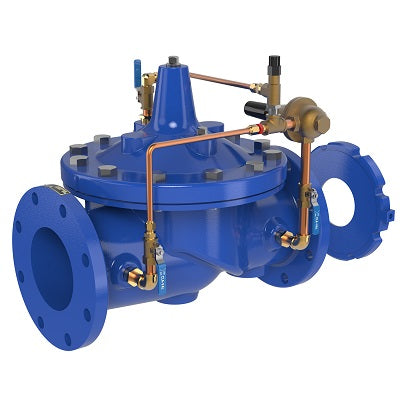Enhancing System Control with High-Performance Control Valves
Enhancing System Control with High-Performance Control Valves
Blog Article

Maximize Energy Cost Savings and Convenience With Advanced Building Automation Controls
In the realm of modern-day style and facility management, the integration of sophisticated building automation regulates stands as an essential development. By taking advantage of the power of automation, structures can adapt, react, and advance in methods that were once unthinkable.
Energy Efficiency Perks
Energy performance benefits can considerably lower energy usage and operational expenses in structures. Energy-efficient systems, such as sophisticated structure automation controls, can enhance the use of sources like lighting, heating, and air conditioning, leading to reduced energy expenses over time.
Additionally, enhanced energy efficiency can lengthen the life-span of structure equipment and systems. By running a lot more successfully, HVAC systems, lighting components, and other structure parts experience much less deterioration, causing reduced upkeep and replacement expenses. Furthermore, energy-efficient buildings commonly regulate higher home worths and rental rates, offering long-term economic benefits to owners.
In addition, power efficiency can enhance resident comfort and productivity. Appropriately controlled interior atmospheres with ideal lighting and thermal problems develop an even more enjoyable and favorable workspace, causing improved staff member complete satisfaction and efficiency. Overall, the power performance benefits connected with sophisticated structure automation controls are complex, encompassing price financial savings, environmental stewardship, and occupant wellness.
Improved Comfort Control
Enhancing convenience control in building settings needs an innovative assimilation of advanced automation systems for optimum passenger wellness. By making use of innovative structure automation controls, centers can tailor the interior setting to meet the specific demands and choices of occupants. control valves.
By integrating these advanced controls, buildings can not just improve comfort however also improve power effectiveness by maximizing system procedures based on actual tenancy and usage patterns. Ultimately, prioritizing owner convenience with advanced automation systems leads to a more satisfying and much healthier interior environment.
Operational Effectiveness Improvements

In addition, the application of real-time monitoring and analytics tools enables building operators to recognize power inadequacies and operational abnormalities without delay. By continuously keeping track of energy usage patterns and system efficiency metrics, adjustments can be made in real-time to enhance power usage and make certain peak operational performance. control valves. In addition, integrating demand reaction approaches into building automation controls can further improve functional efficiency by dynamically changing power usage based on grid conditions and prices signals
Indoor Climate Optimization
Efficient indoor environment optimization is a basic aspect of structure automation controls, guaranteeing passengers' convenience and health while making best use of power cost savings. By utilizing sophisticated sensors and controls, constructing automation systems can continually check and change temperature, humidity levels, air quality, and air flow to hop over to these guys create an optimum interior atmosphere. click here now Maintaining consistent and comfortable conditions not only boosts owner fulfillment however likewise enhances performance and overall well-being.
Indoor environment optimization additionally plays an essential role in power efficiency. By fine-tuning ventilation, cooling, and heating systems based upon real-time information and tenancy patterns, building automation controls can significantly minimize power consumption - control valves. For instance, executing techniques such as demand-controlled ventilation and thermal zoning can aid reduce power waste while guaranteeing that each location of the building gets the essential conditioning.

Sustainable Environment Production
Building automation manages not only optimize interior climate problems for power performance and passenger convenience but likewise lay the foundation for creating a lasting setting via strategic monitoring of systems and sources. By integrating advanced structure automation technologies, such as sensors, actuators, and intelligent software program, centers can readjust and check power use in real-time to minimize waste and minimize their carbon impact. These systems enable anticipating maintenance, identifying prospective concerns prior to they rise and enhancing equipment efficiency to enhance long life and efficiency.
Furthermore, sustainable setting development prolongs beyond power administration to incorporate go to this site water conservation, waste decrease, and indoor air quality improvement. Structure automation controls can manage water use, find leakages, and ensure proper garbage disposal techniques, adding to general sustainability efforts. Furthermore, by regulating and monitoring air flow and purification systems, these modern technologies improve occupant health and efficiency while lowering energy intake connected with a/c procedures.
Final Thought
To conclude, progressed building automation regulates deal significant advantages in regards to energy cost savings, comfort control, functional efficiency, interior climate optimization, and producing a lasting atmosphere. By carrying out these controls, structures can achieve optimal efficiency while decreasing power intake and enhancing resident convenience. It appears that the usage of sophisticated automation innovation is essential in enhancing building performance and developing an extra sustainable future.
Power effectiveness benefits can considerably lower energy intake and functional prices in buildings. Overall, the power effectiveness advantages linked with innovative structure automation controls are diverse, encompassing cost savings, environmental stewardship, and resident wellness.
In addition, incorporating need feedback methods right into building automation controls can even more improve functional efficiency by dynamically adjusting energy use based on grid problems and rates signals.
Structure automation manages not just optimize indoor climate conditions for power performance and occupant comfort however also lay the structure for developing a sustainable setting through critical monitoring of resources and systems.In final thought, progressed structure automation manages offer substantial advantages in terms of energy cost savings, comfort control, operational performance, indoor climate optimization, and producing a lasting atmosphere.
Report this page